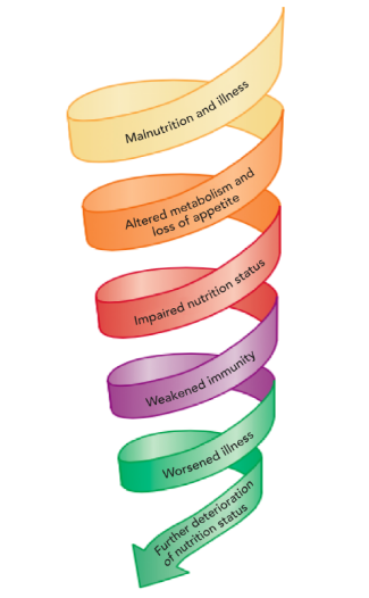Understanding the Immune System
On a daily basis, we are at risk of exposure to harmful microbes which may cause various viruses and disease. Studies show that the most common among the many are colds, influenza (flu), and bronchitis. The SARS-CoV-2 or the COVID-19, which is responsible for the long lockdowns and restrictions at present, is also an example of a virus arising from contact with an infected individual.
The immune system, one of the most delicate and intricate systems of the human body, acts as the body’s defense by recognizing foreign invaders such as bacteria, viruses and parasites, and triggers a protective response.
Humans possess two types of immunity: innate and adaptive.
Innate immunity “which you are born with” - is the first line of defense that acts as a barrier to protect us from pathogens that try to enter our bodies. This includes the skin (keeps out the majority of pathogens), mucus (traps pathogens), stomach acid (destroys pathogens), enzymes in sweat and tears (help create antibacterial compounds), and the immune system cells (attack all foreign cells entering the body).
Adaptive or acquired immunity “which you develop” - is a system that learns to recognize pathogens. With help from the innate system, it produces cells (antibodies) to protect your body from a specific invader. These antibodies develop and multiply to attack and destroy these harmful substances. The immune system then adapts by remembering the foreign substance so that if it enters again, these antibodies and cells are even more efficient and quick to destroy it.

Figure 1. Nutrition and Immunity Spiral. The figure shows how malnutrition, other diseases, and weakened immunity all combine to compromise recovery and further worsen malnutrition, regardless of where the person enters in the spiral (Whitney & Rolfes, 2019).
Impact of malnutrition to immunity
Malnutrition compromises immunity as it is considered highly sensitive to subtle changes in nutrition and diet. Infectious diseases can arise as a result of weakened immunity, leading to increased nutrition requirements and reduced food intake. Consequently, nutrition status suffers further. It creates a synergistic downward spiral for recovery to occur.
Infections happen when the immune system is compromised, when the microbe is highly virulent or infectious, and when the number of pathogens is high. The first factor, a compromised immune system, is the easiest to address. As mentioned, the immune system is supported by a balanced diet that is rich in nutrients.
If not addressed properly and immediately, a weakened immune system may lead to more serious and life-threatening events20.The table below summarizes the effects of Protein-Energy Malnutrition (PEM) on the body’s defense system:
Table 1. Effects of PEM on the Body’s Defense System (Whitney & Rolfes, 2019)
| BODY'S DEFENSE | IMPACT TO MALNUTRITION |
|---|---|
| Skin | Thinned, with less connective tissue to serve as a barrier to protect underlying tissues; delayed skin sensitivity reaction to antigens. |
| Digestive tract and other body linings | Antibody secretions and immune cell number reduced |
| Lymph tissues (include thymus, lymph nodes, and spleen) | Immune system organs reduced in size; cells of immune defense depleted |
| General Response | Invader kill time prolonged; circulating immune cells reduced; antibody response impaired |
In the Philippines, for example, there are widespread deficiencies in zinc and iron due to imbalanced diets. There is an urgent need to address the disconnect between the years of research being done by the Food and Nutrition Research Institute and the plates of the Pinoys. The lingering question is that out of the many vitamins and minerals, which possesses the benefits related to immunity and what are their common food sources?
The European Food Safety Authority (2016) has verified the 10 essential nutrients for the maintenance of a healthy immune system. We also listed some local sources of these nutrients (Table 2).
Table 2. Ten essential nutrients for the maintenance of a healthy immune system
| NUTRIENT | EFFECT ON IMMUNITY (based on EFSA Scientific Opinion and Substantiation) | FOOD SOURCES |
|---|---|---|
| Vitamin C | Scientific evidence reflects that Vit. C contributes to a normal function of the immune system. More specifically, during and after an intense physical exercise, Vit. C contributes to maintaining the normal function of our immune response. Moreover, vitamin C acts as an antioxidant. It helps protect body cells from oxidative stress/damage due to free radicals. | Most fruits (i.e guyabano, papaya, banana, and apple) and dark green vegetables such as broccoli, alugbati, malunggay, and green bell peppers. |
| Vitamin D | Scientific evidence shows that Vitamin D contributes to the normal function of the immune system. Specifically, Vitamin D3 has long been known to aid in calcium absorption, and new research shows that it also plays a role in cardiovascular function and supports healthy inflammatory response. | Mostly found in fortified milk, butter, beef, egg yolks, fatty fish (i.e mackerel, salmon, sardines, and tuna), and chocolate. |
| Vitamin A | Generally, scientific studies established that one of the claimed effects of dietary intake of Vitamin A contributes to normal cell differentiation leading to normal function of the immune system. Vitamin A contributes to maintenance of normal skin and mucous membranes which serves as our first line of defense. Moreover, dietary intake of Vitamin A provides protection of DNA, proteins and lipids from oxidative damages. | Mostly found in deep-orange fruits (i.e papaya), dark leafy vegetables (i.e alugbati and malunggay), and other vegetables such as carrots, and squash. |
| Vitamin B12 | Scientific evidence shows that Vitamin B12 contributes to a normal function of the immune system through its involvement in nucleic acid and protein biosynthesis in concert with Vitamin B6 and Folate. Moreover, administration of Vitamin B12 is reported to restore abnormally high CD4+/CD8+ ration and suppress NK cell activity in patients with Vitamin B12 deficiency as shown in recent studies. | Mostly in animal products, such as meat, fish, poultry, shellfish, milk, cheese and eggs |
| Vitamin B6 | Scientific evidence established a cause and effect relationship between dietary intake of Vitamin B6 and normal function of the immune system. Particularly, Vitamin B6 is a required coenzyme in the metabolism of antibodies and cytokines. Lymphocytes isolated from vitamin B6-deficient persons display reduced proliferation, reduced interleukin-2 production in response to mitogens, and reduced antibody production in response to immunization. | Mostly in meats, fish, poultry, liver, starchy vegetables, such as potatoes, and soy products. |
| Folate | Scientific evidence shows that folate contributes to normal immune function. Specifically, it plays a crucial role in nucleotide synthesis, and thus may affect immune cell proliferation and responsiveness. Cells lacking folate accumulate in the S-phase owing to nucleotide imbalance and slow DNA synthesis, and thus have increased uracil misincorporation and DNA damage. Recent studies show that proliferation is restored by adding folate back in folate-deficient cells. | Mainly found in dark green and leafy vegetables, beans, legumes, seeds, peanuts and liver. |
| Zinc | Scientific evidence concludes that dietary intake of zinc contributes to normal function of the immune system. Zinc-deficient individuals are more susceptible to bacterial and viral infections, as the deficiency is associated with the decline in most aspects of immune function. Recent clinical studies observed occurrence of lymphopenia and thymic atrophy in individuals with inadequate zinc intake in their diet | Mainly from protein-containing foods, such as red meats, shellfish, whole grains, and some fortified cereals. |
| Copper | Scientific evidence concludes that a cause and effect relationship has been established between dietary intake of copper and the normal function of the immune system. Copper deficiency in humans results in thymus atrophy and Neutropenia is a hallmark of copper deficiency in humans. Copper-related enzyme cytochrome-c oxidase is needed for energy production of immune cells against reactive oxygen species. Moderate and even marginal copper deficiency affects some activities of T-lymphocytes and phagocytic cells adversely, while severe copper deficiency generally changes the phenotypic profiles of immune cells in blood, bone marrow, and lymphoid tissues. | Mainly found in seafood, nuts, whole grainds, seeds, and monggo. |
| Iron | Scientific evidence concludes that iron deficiency is associated with changes in the cell-mediated immune response, impaired neutrophil function, reduction of numbers of T-cells, B-cells and natural killer cells, defective T-lymphocyte-induced proliferative response, reduction of secretory IgA, reduction of levels of complement C3 and C4, and inhibition of the activity of IFN-y are among other known effects. Iron is required for the regeneration of new CD4+ T lymphocytes and maintenance of T-cell cytolytic processes. This further concludes an established cause and effect relationship between dietary intake of iron and a normal function of the immune system. | Main sources are red meats, fish, poultry, shellfish, eggs, alugbati, malunggay, monggo and legumes. |
| Selenium | Scientific evidence shows that selenium contributes to the normal function of the immune system. Selenium plays an important role in cell-mediated immunity. Studies show that supplementation with selenium among humans stimulates the proliferation of activated T-cells and elicits an enhanced response to antigen stimulation. Moreover, an enhanced ability to generate cytotoxic lymphocytes, an enhanced ability to destroy tumor cells, and increased natural killer cell activity. Growth-regulatory interleukin-2 receptors on the surface of activated lymphocytes and natural killer cells became upregulated. | Mainly sourced from meat, whole grains, fruits and vegetables (based on soil content). |
To further contextualize these 10 crucial nutrients, we are providing their daily recommended values and tolerable upper limits (UL). According to EFSA (2009), the tolerable upper limit is “the maximum level of total chronic intake of a nutrient of all sources judged to be unlikely to pose a risk of adverse health effects in humans.”
Table 3. Daily Recommended Intakes and Upper Tolerable Limits of nutrients (DOST-FNRI, 2018; Whitney & Rolfes, 2019
| Nutrient | Daily Recommended Nutrient Intakes | Upper Tolerable Limit | ||
|---|---|---|---|---|
| Children | Adult | Children | Adult | |
| Vitamin C | 1 - 12y: 45 mg 13 - 15y M: 60 mg F: 55 mg 16 - 18y F: 60 mg | 29 - 70 y M: 70 mg F: 60 mg | 1 - 3 y: 400 mg 4 - 8 y: 650 mg 9 - 13 y: 1200 mg 14 - 18 y: 1800 mg | 19 - 49y:1000mg |
| Vitamin D | 5 μg | 29 - 49 yo: 5 μg 50 - 59 yo: 10 μg 60 - 70 yo: 15 μg | 50 μg | 50 μg |
| Vitamin A | 1 - 9 yo: 400 μg 10 - 12 yo: 500 μg 13 - 15 yo: M: 700 μg F: 500 μg 16 - 18 yo: M: 800 μg F: 600 μg | 19 and above M: 700 μg F: 600 μg | 1 - 3 yo: 600μgRE 4 - 8 yo: 900μgRE 9 - 13 yo: 1700μgRE 14 - 18 yo: 2800 μgRE | 19 - 49 yo: 3000 μgRE |
| Vitamin B12 | 1 - 2 yo: M: 0.9 μg F 1.0 μg 3 - 5 yo: M: 1.1 μg F: 1.2 μg 6 - 9 yo: M: 1.3 μg F: 1.5 μg 10 - 12 yo: M: 1.8 μg F: 2.1 μg 13 - 15 yo: M: 2.3 μg F: 2.2 μg 16 - 18 yo: M: 2.7 μg F: 2.4 μg | 29 - 70 yo: 2.4 μg | NA | NA |
| Vitamin B6 | 1 - 2 yo: M: 0.5 mg F 0.5 mg 3 - 5 yo: M: 0.6 mg F: 0.7 mg 6 - 9 yo: M: 0.7 mg F: 0.8 mg 10 - 12 yo: M: 1.0 mg F: 1.1 mg 13 - 15 yo: M: 1.3 mg F: 1.2 mg 16 - 18 yo: M: 1.5 mg F: 1.3 mg | 19 - 49 yo: M: 1.3 mg F: 1.3 mg 50 - 70 yo: M: 1.7 mg F: 1.6 mg | 1 - 3 yo: 30 mg 4 - 8 yo: 40 mg 9 - 13 yo: 60 mg 14 - 18 yo: 80 mg | |
| Folate | 1 - 2 yo: 150 μgDFE 3 - 5 yo: 200 μgDFE 6 - 12 yo: 300 μgDFE 13 - 18 yo: 400 μgDFE | 29 - 70 yo: 400 μgDFE | 1 - 3 yo: 300 μgDFE 4 - 8 yo: 400 μgDFE 9 - 13 yo: 600 μgDFE 14 - 18 yo: 800 μgDFE | 19 - 49 yo: 1000 μgDFE |
| Zinc | 1 - 2 yo: M: 4.1 mg F 4.0 mg 3 - 5 yo: M: 5.0 mg F: 4.8 mg 6 - 9 yo: M: 5.1 mg F: 5.0 mg 10 - 12 yo: M: 6.6 mg F: 6.1 mg 13 - 15 yo: M: 9.2 mg F: 7.4 mg 16 - 18 yo: M: 9.0 mg F: 7.2 mg | 19 - 49 yo: M: 6.5 mg F: 4.6 mg | 1 - 3 yo: 7 mg 4 - 8 yo: 12 mg 9 - 13 yo: 23 mg 14 - 18 yo: 34 mg | 19 - 70 yo: 1000 μgDFE |
| Copper | 1 - 3 yo: 340 μg 4 - 8 yo: 440 μg 9 - 13 yo: 700 μg 14 - 18 yo: 890 μg | 19 - 70 yo: 900 μg | 1 - 3 yo: 1000 μg 4 - 9 yo: 3000 μg 9 - 13 yo: 5000 μg 14 - 18 yo: 8000 μg | 19 - 70 yo: 10000 μg |
| Iron | 1 - 2 yo: 8 mg 3 - 5 yo: 9 mg 6 - 9 yo: M: 10 mg F: 9 mg 10 - 12 yo: M: 12 mg F: 20 mg 13 - 15 yo: M: 19 mg F: 28 mg 16 - 18 yo: M: 14 mg F: 28 mg | 19 - 49 90: M: 12 mg F: 28 mg 50 - 70 yo: M: 12 mg F: 10 mg | 1 - 13 yo: 40 mg 14 - 18 yo: 45 mg | 19 - 70 yo: 45 mg |
| Selenium | 1 - 2 yo: M: 17 μg F 16 μg 3 - 5 yo: M: 20 μg F: 20 μg 6 - 9 yo: M: 20 μg F: 19 μg 10 - 12 yo: M: 21 μg F: 23 μg 13 - 15 yo: M: 30 μg F: 29 μg 16 - 18 yo: M: 37 μg F: 32 μg | 19 - 70 yo: M: 38 μg F: 33 μg | 1 - 3 yo: 90 μg 4 - 8 yo: 150 μg 9 - 13 yo: 280 μg 14 - 18 yo: 400 μg | 19 - 70 yo: 400 μg |
Table 4. Tips to incorporate immunity nutrients into the diet
| TIPS | IMMUNITY NUTRIENTS |
|---|---|
| 1. Match or combine food in dishes to enhance nutrient content or absorption. For example, mixing eggs in food enhances absorption of nutrients. Pairing two incomplete proteins such as beans and rice to consume a complete protein profile | Eggs have been identified to represent the lowest-cost animal source for proteins, vitamin A, iron, vit B12, riboflavin, choline, and the second lowest-cost source for zinc and calcium.
Egg yolk contains high amounts of vitamin A, D, E, K, B1, B2, B5, B6, B9, and B12. Egg white has high amounts of vitamins B2, B3, and B5 & significant amount of vitamins B1, B6, B8, B9, and B12 (Gumaru, n.d.).
Vitamin B9 (folic acid) is found predominanly in beans (CFR - Code of Federal Regulations, n.d.). |
| 2. Prepare mixed foods by incorporating different food items in a single dish to meet daily nutrient needs. For example sinigang, pinakbet, and pancit bihon. | Pinakbet - several vegetables like eggplant, ampalaya, squash, okra and string beans - general high in fiber and Vitamin A
Sinigang na isda - water spinach (kangkong) provides decent amounts of Vitamins A and folate (ABS-CBN News, 2014). |
| 3. Learn to make 'healthified' snacks by using fresh fruits, dried fruits, and vegetables. | Fruits and vegetables contain various nutrient components that are linked to better health outcomes (Stavin & Lloyd, 2012).
Most fruits and vegetables are rich in dietary fiber, vitamin C, vitamin E, carotenoids and folic acid.
However, one should remember that processed fruits and vegetables may slightly vary nutrionally. |
| 4. Use canned, dried, and frozen produce if fresh is not available, 17 but check the label for "packed in 100% juice", "unsweetened", "no added sugar", and "reduced sodium" (Carter, 2018). | |
| 5. Have fun with hydration by preparing smoothies from fresh fruit, making homemade popsicles, and infusing water with fruit and mint |
Different age groups and populations require specific nutrient advice. The following outlines the important nutrients for specific population groups:
- Children – Protein and essential fatty acids
- Adults – Vitamin C and K, Vitamins B1, B2, and B3, choline, magnesium, zinc, chromium, manganese
- Elderly – Vitamin D
- Pregnant – Vitamins A, C, D, E, iron, selenium, zinc (In line with increased physiological changes, increased nutrient intake is required during pregnancy to support the development of the fetus, placental tissue, and thus, a favorable pregnancy outcome. Micronutrient intake can help reduce unfavorable pregnancy outcomes and strengthen immune response.)17
Water’s role in immunity
It bears repeating that water is an important part of the diet. It plays a crucial role in maintaining the immune system by enabling the absorption of various nutrients into the body. As a reminder, one needs to drink 7 to 9 glasses of water daily to maintain hydration and promote proper nutrient absorption.
Outside having a balanced diet, there are other factors that help keep the immune system functioning well. Food is only one part of a healthy lifestyle.
Here are simple reminders that RNDs and doctors should dispense:
- Get 7-9 hours of sleep daily.
- Do at least 30 minutes of exercise daily.
- Learn how to manage your stress at work and at home.
- Drink 8 glasses of water per day.
- Avoid smoking and alcohol consumption.
- Practice good personal hygiene.
- Follow infection control protocols.
- Get immunized for recommended vaccine-preventable diseases.
The immune system is fairly easy to maintain: all one needs is a diet that provides all the needed nutrients. Balancing the diet is inexpensive and goes a long way. In that, it prevents diseases including lifestyle diseases, and definitely helps avoid future cost of medicine and hospitalization. For parents, it is important to teach children to eat vegetables early, aside from just meat, to develop their taste and start them off the path to a healthy lifestyle. Outside having a balanced diet, there are other factors that help keep the immune system functioning well. Food is only one part of a healthy lifestyle.


 Nestlé
Nestlé














No comments here yet.